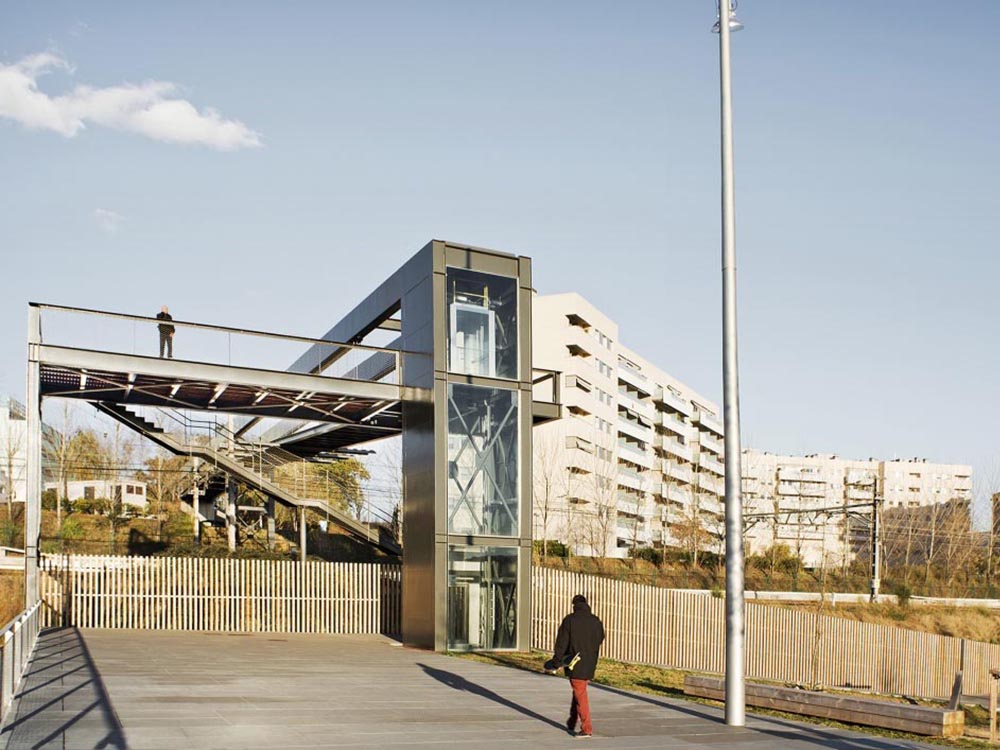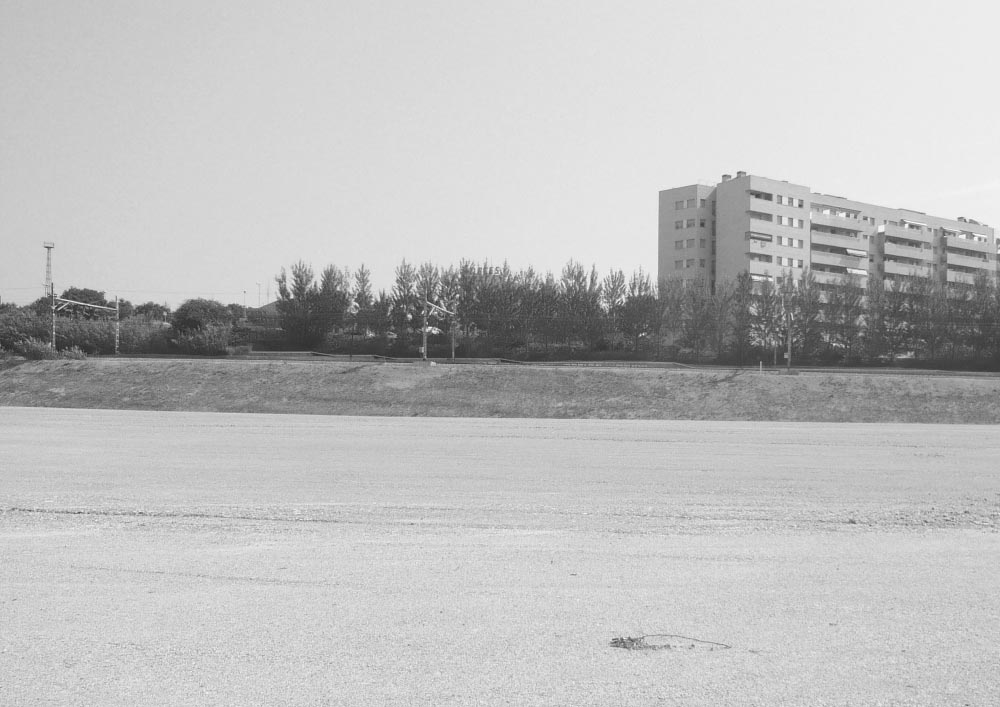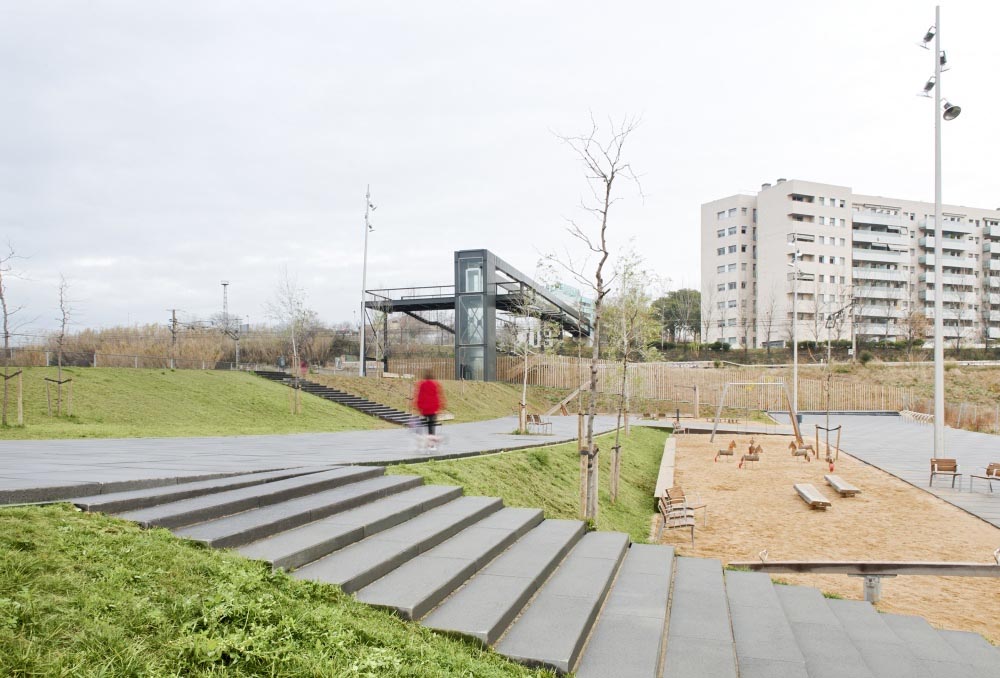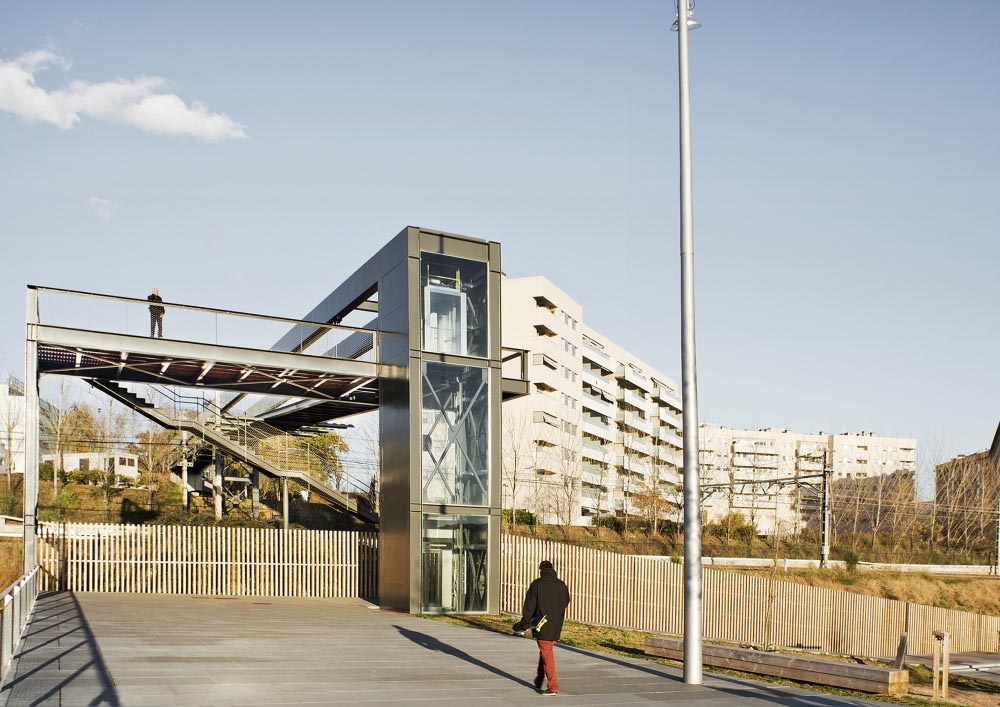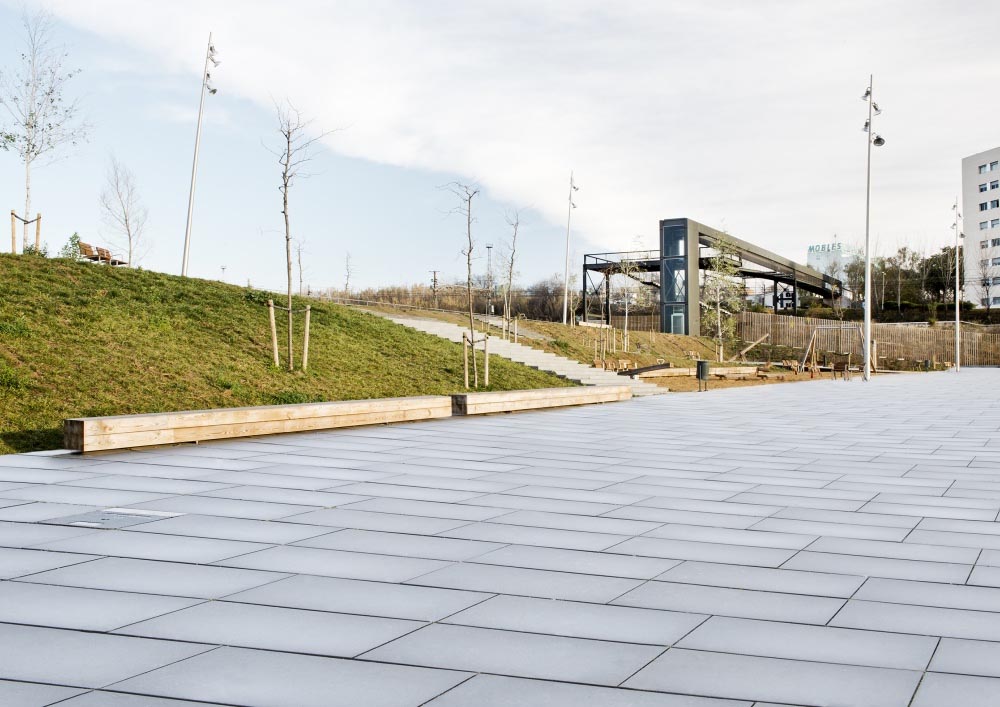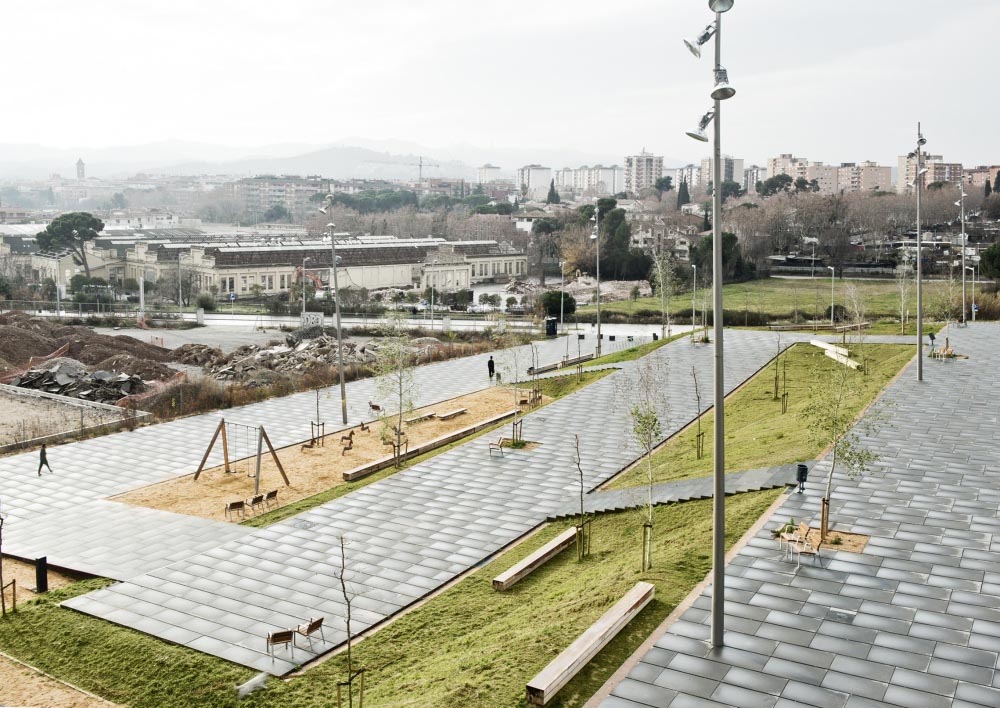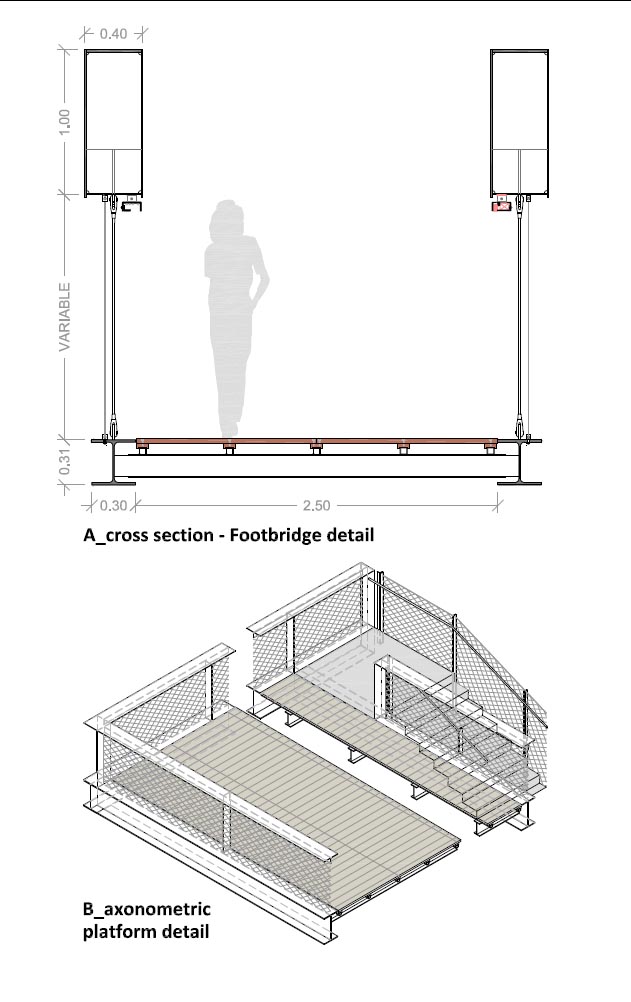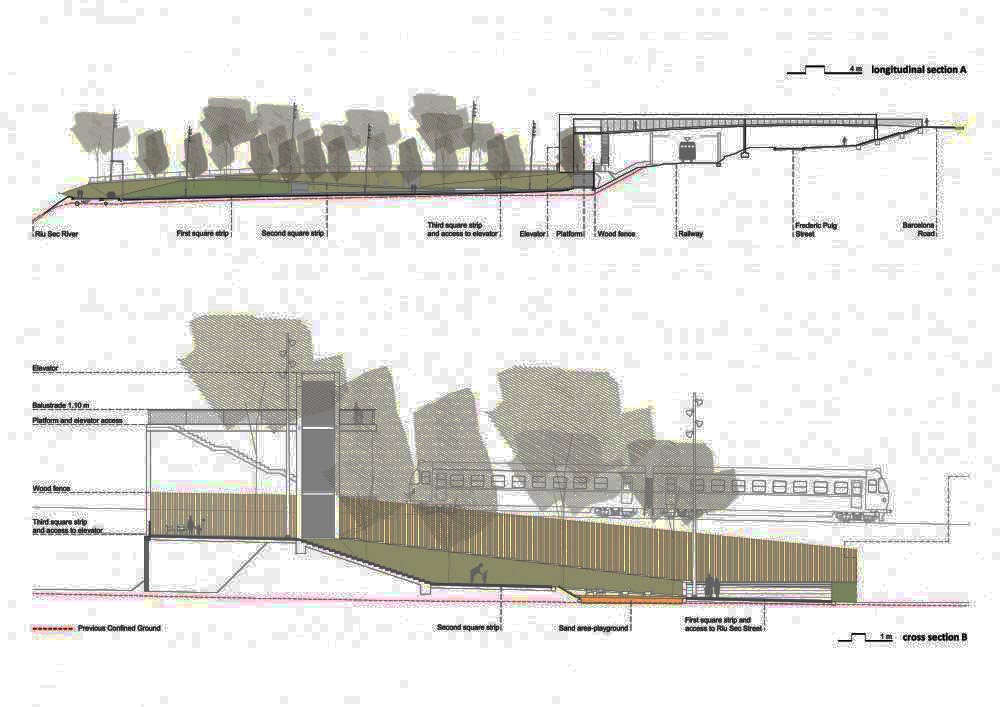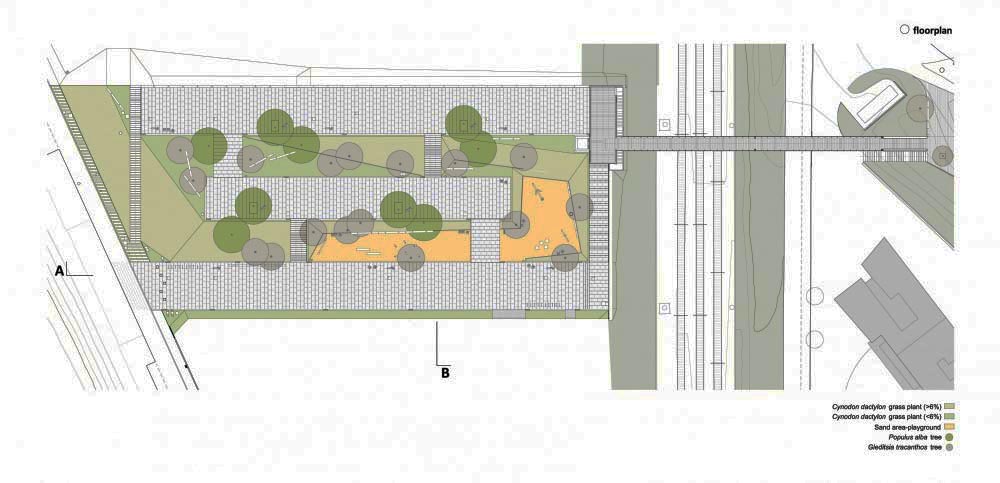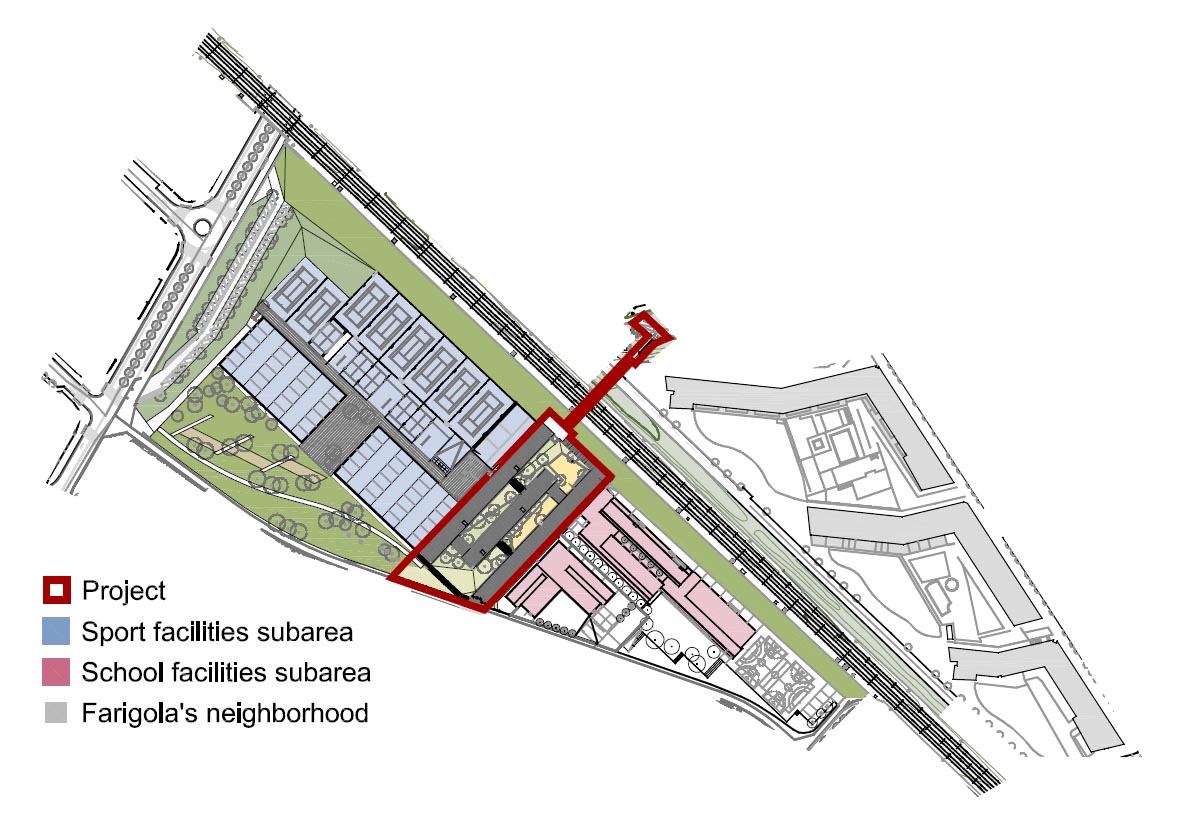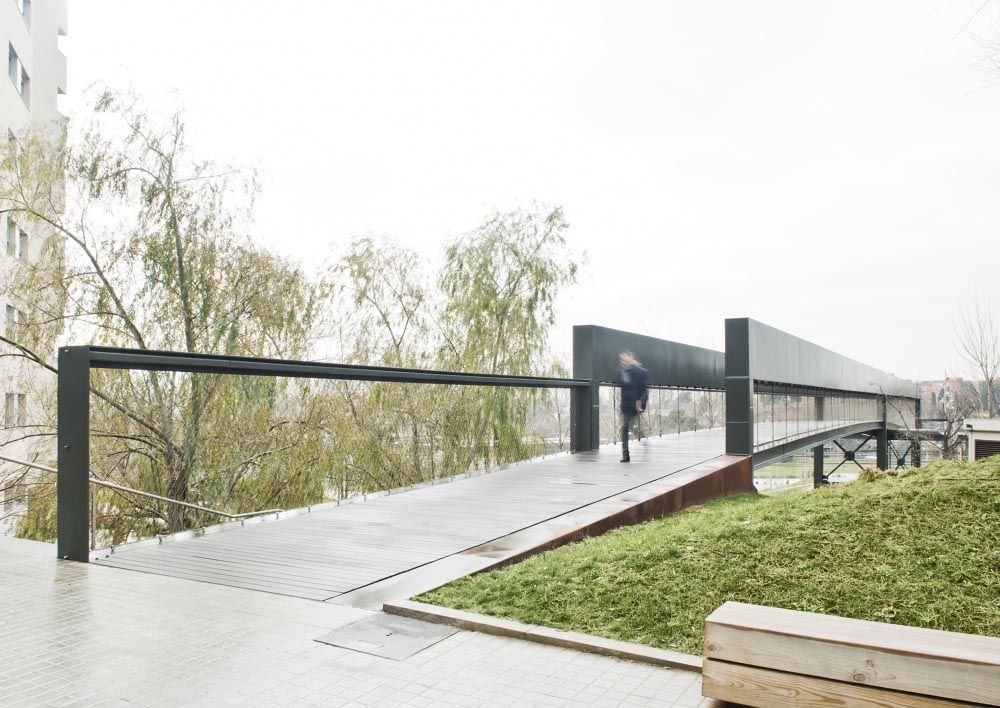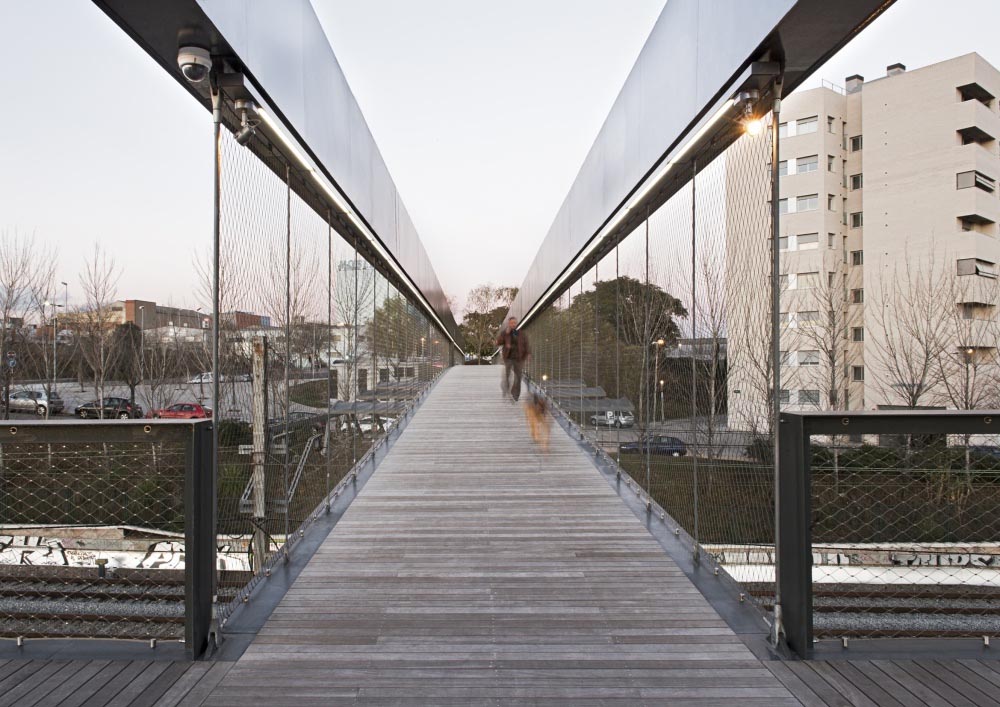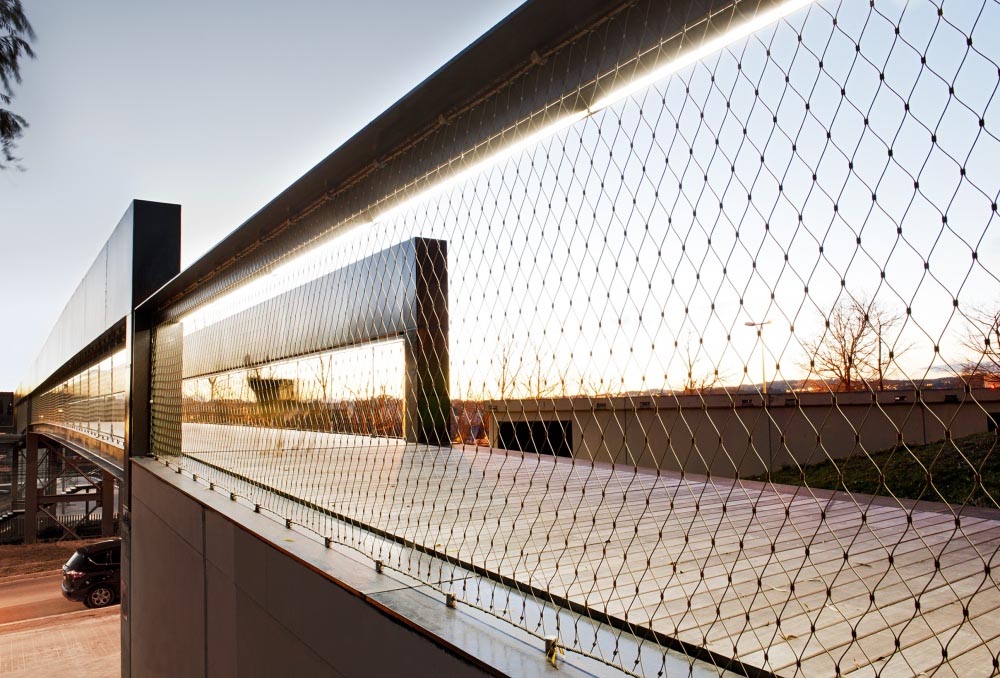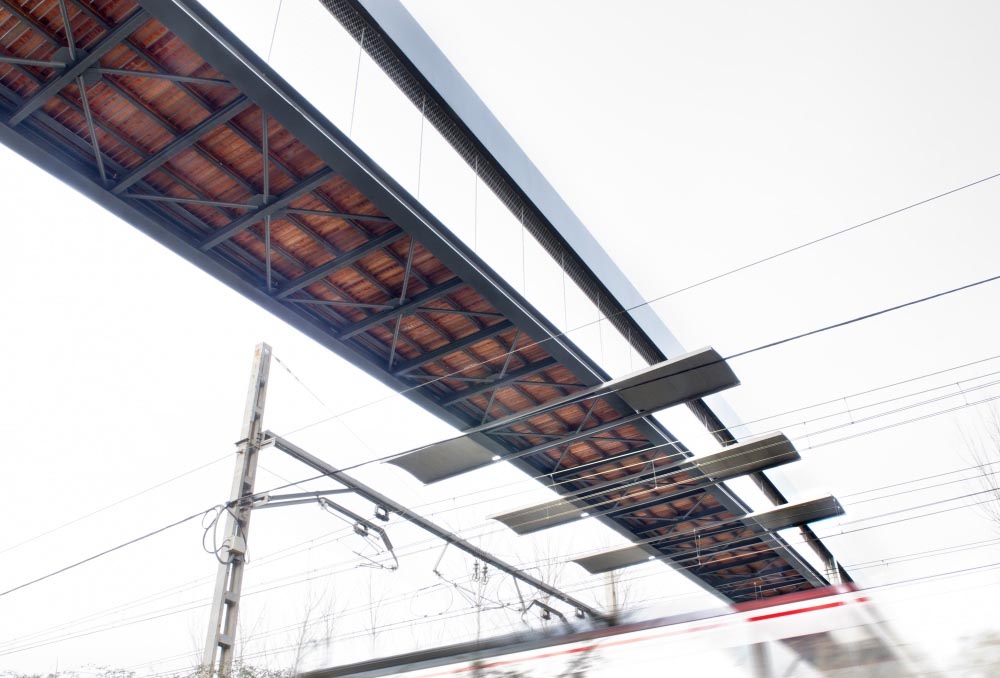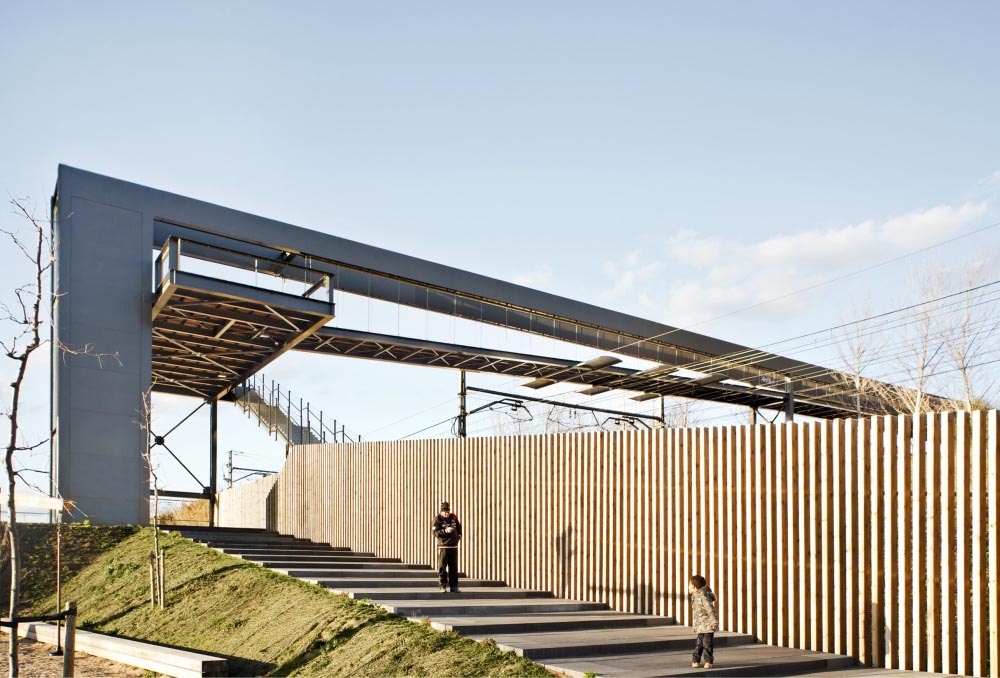Previous state
The topography and a railway line constituted an impassable barrier between the neighbourhood of La Farigola and the rest of Cerdanyola del Vallès. Located on a mountain slope, the outlying area of La Farigola is a few metres above the route of the railway line. Lower down, at the level of the municipality, there is a river, the Riu Sec and, to complicate matters even further, between the infrastructure and the water is an area of land used as a rubbish tip by a company called Uralita, - which manufactures fibre cement roofing sheets – before it was known that the asbestos fibres in this material are a serious health hazard.Once it had been confirmed that the company land was highly contaminated, the Council took action to seal it off. After that, however, its devastated appearance remained unchanged for decades. In 2009, the Council planned a road to run along the bank of Riu Sec, envisaging that educational and sports facilities would be constructed later, thus giving the place a more central role.
Aim of the intervention
With these plans in mind, the Council earmarked more than a million euros to carry out a project that would connect the neighbourhood of La Farigola with the future facilities and the rest of the town. Given the complexity of the site, it was decided to use the former contaminated landat river level to construct a new square, which could act as a vestibule for the new municipal equipment. A lift and a footbridge would be installed to cross the railway line and connect the square with the upper level in La Farigola.Description
The new Riu Sec square has a surface of more than seven thousand square metres. It consists of three gently sloping strips, always at less than 6%, so that the ground gradually rises in in keeping with the gradient of the land. These are paved with large precast concrete slabs and are separated by interstitial mounds of a softer appearance, planted with grass or covered with gravel. This form has provided a thicker layer to act as protection from the contaminated soil and has made it possible to plant big trees without risk of contact with it.At the upper level is the entrance to a twelve-metre tower. At the top of this there is a platform-cum-lookout opening onto a footbridge paved with wooden boards and suspended from two metal beams of almost eighty metres in length. After crossing the railway lines, the bridge ends smoothly in La Farigola without placing any kind of obstacle in the way of people with reduced mobility.
Assessment
As it waits for the future public facilities which will endow the Riu Sec square with the centrality that has been planned for it, the neighbourhood of La Farigola is at last connected with the rest of Cerdanyola. The footbridge and lift which now unite them not only perform an infrastructural role but, thanks to the monumental power of the right-angle they form, they open up an impressive gateway giving access to an unjustly isolated neighbourhood while also constituting a symbol of its identity.David Bravo
Translation by Julie Wark
[Last update: 18/06/2018]


